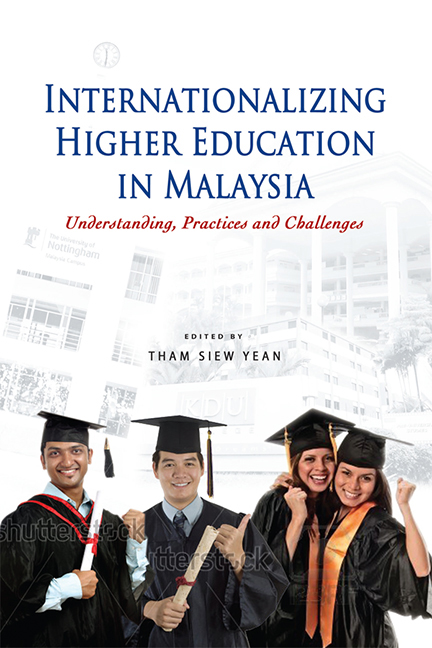Book contents
- Frontmatter
- Contents
- List of Tables
- List of Figures
- Preface
- Contributors
- 1 From the Movement of Itinerant Scholars to a Strategic Process
- 2 Towards Understanding the Internationalization of Higher Education and its Challenges
- 3 Public Universities: Development and Internationalization
- 4 Private Higher Education Institutions: Development and Internationalization
- 5 Macro Perspectives: Ideas, Practices and Challenges
- 6 Micro Perspectives: Ideas, Practices and Challenges
- 7 Concluding Remarks
- Index
6 - Micro Perspectives: Ideas, Practices and Challenges
Published online by Cambridge University Press: 21 October 2015
- Frontmatter
- Contents
- List of Tables
- List of Figures
- Preface
- Contributors
- 1 From the Movement of Itinerant Scholars to a Strategic Process
- 2 Towards Understanding the Internationalization of Higher Education and its Challenges
- 3 Public Universities: Development and Internationalization
- 4 Private Higher Education Institutions: Development and Internationalization
- 5 Macro Perspectives: Ideas, Practices and Challenges
- 6 Micro Perspectives: Ideas, Practices and Challenges
- 7 Concluding Remarks
- Index
Summary
INTRODUCTION
Ideas and practices of internationalizing higher education, although not really new in terms of the history of higher education in Malaysia, may be new to, and understood differently by, different people and institutions today. While there may be some commonalities in the understanding of certain aspects of the idea of internationalization among different institutions and people, the variations in the idea and views can be quite remarkable. Naturally, the variations would necessarily lead to different emphasis being given to the practice of internationalization in their respective institutions. Similarly, the challenges of internationalization perceived and faced by the institutions tend to vary between public and private higher institutions of learning, and also between academics, administrators and students. While the survey of the various institutions, as shown in Chapter 5, shows both similarities and diversities in the responses, the differences perceived at the micro level, through interviews with the relevant informants, namely the administrators, academics and students in these various institutions appear to be far greater than the differences at the macro level.
This chapter will discuss the ideas and practices as well as the challenges in internationalizing higher education in Malaysia, based on the findings from focus group discussions and interviews with administrators, lecturers and students (local and international) from selected institutions that participated in the research base of this book. In all, more than sixty informants consisting of a number of administrators, lecturers and students from nine higher education institutions — five public universities and four private universities and colleges — were engaged either in focus group discussions or in in-depth interviews to obtain the qualitative data (see list of institutions at the end of the chapter). It will first examine the ideas and practices of internationalization in these institutions, followed by discussion on the challenges in internationalization. The chapter will show, wherever possible, the similarities and differences between public and private higher institutions of learning, and also will give particular attention to the research universities.
- Type
- Chapter
- Information
- Internationalizing Higher Education in MalaysiaUnderstanding, Practices and Challenges, pp. 113 - 131Publisher: ISEAS–Yusof Ishak InstitutePrint publication year: 2012



